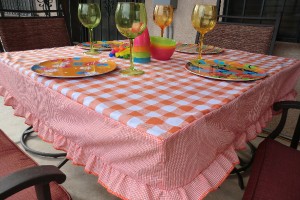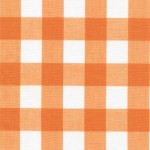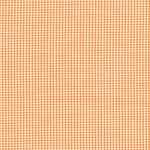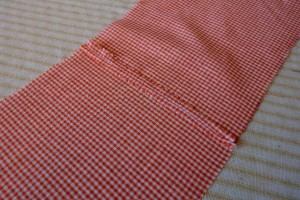 [4] [4] |
Take your fitted side pieces and sew them together with 1/2 inch seam allowances. Use pinking shears to trim the seam allowances and press them open. Sew them all together so that you have a big loop.
|
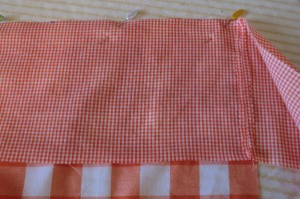 [5] [5] |
Pin one side at a time to your tablecloth top. You’ll want your seams to be just a little bit away from each edge because we’re going to pivot and sew down the next side. |
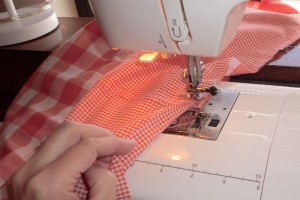 [6] [6] |
You’ll use a 1/2 inch seam allowance. Here I’ve sewn down one side and reached the end. |
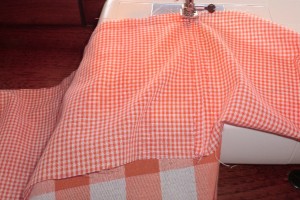 [7] [7] |
Lift your presser foot and pivot your table cloth. Now the cloth underneath is ready for me to sew down, but the fitted side piece is not yet aligned properly. We need to turn that piece so that the seam that is currently running vertically rotates 90 degrees up to the left. |
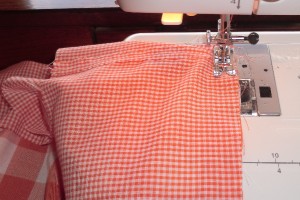 [8] [8] |
See? Now I’ve aligned side two of the fitted side with side two of the main cloth. You’ll want your needle to be in the seam while you pivot. Sew this side and repeat all the way around. Unless … |
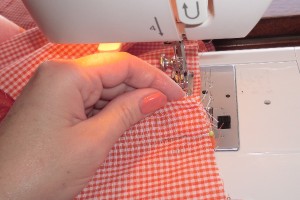 [9] [9] |
You may get to the end of one of your sides and find you have a bit too much of the fitted side piece. In other words, the seam allowance of the fitted side piece extends too far past the tablecloth piece. This is an easy fix that I do as I go along. Stop a little ways before the end and then place a pin where you’d rather see the seam allowance on the side piece. Sew a new seam on the side piece and trim the seam allowance with pinking shears. Now go back to sewing the way you were before you were so rudely interrupted by your previous sloppiness. |
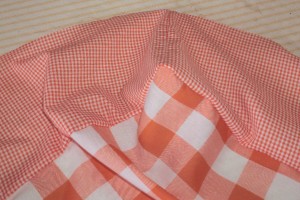 [10] [10] |
You’ll get a nice fitted edge at each corner.
|
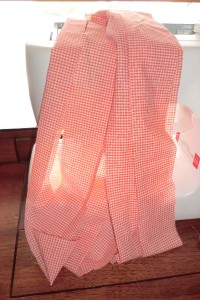 [11] [11] |
Now sew your five ruffle strips together into a big loop, ensuring that all raw seams face the same way. |
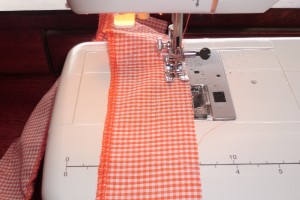 [12] [12] |
I serged the bottom edge of my ruffle instead of hemming it. If you plan to hem it, do so now.
NOT PICTURED: Fold your ruffle in half, then in half again. At each fold, make a mark with a fabric marker. This divides it approximately into four sections.
Now do a long gathering stitch along the ruffle, starting a new section with each mark so that in the end, you have four sections you can gather separately. Leave long tails on either end.
|
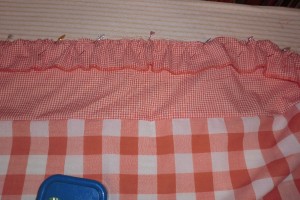 [13] [13] |
Each mark that you made above will correspond with one of the tablecloth corners. Do one side at a time. Pin one mark to each corner. You’ll have a bunch of extra fabric in between, but that’s OK because we’re going to gather it up using the long stitches. Pull the bobbin thread on one end and start gathering it up until it’s about the same length as that side of the tablecloth. Then evenly distribute the gathers and pin in place.
Sew along that edge, making sure not to go too far and interfere with the gathering stitches on the next side.
Repeat for all sides. This is much easier than trying to gather the whole thing at once and then evenly distribute it around the entire tablecloth. |
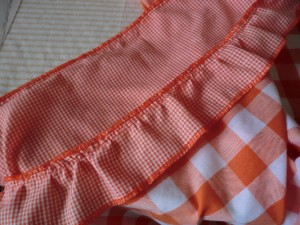 [14] [14] |
After my tablecloth was assembled, I went back and serged all of the seam allowances to keep it from unraveling in the washing machine and also to make it look nice. |
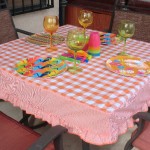 [15]
[15]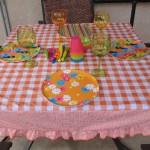 [16]
[16]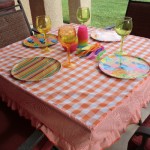 [17]
[17]